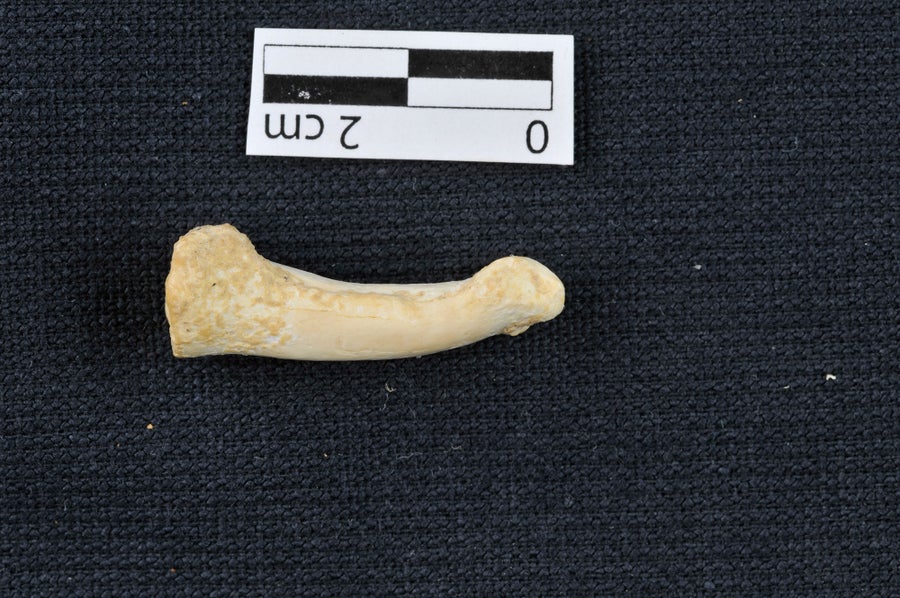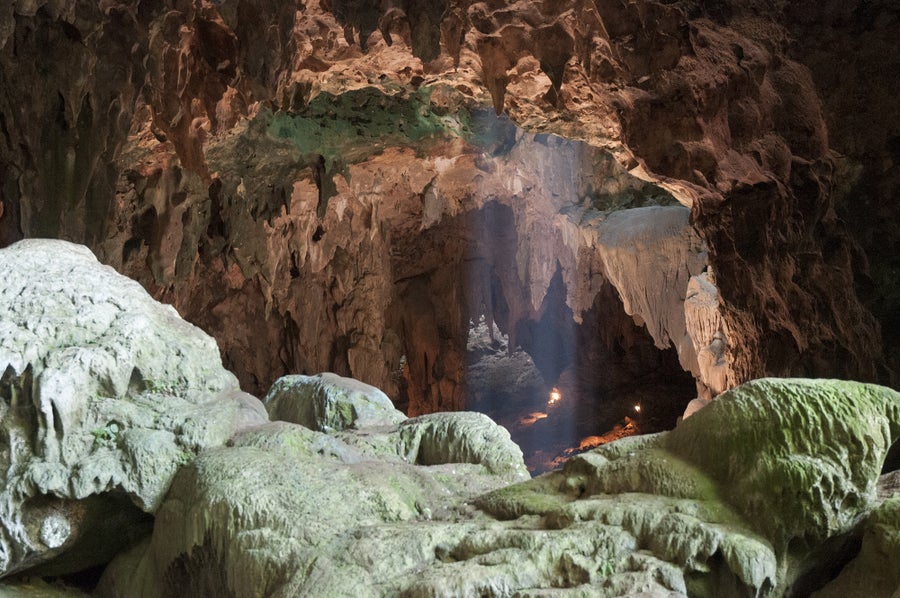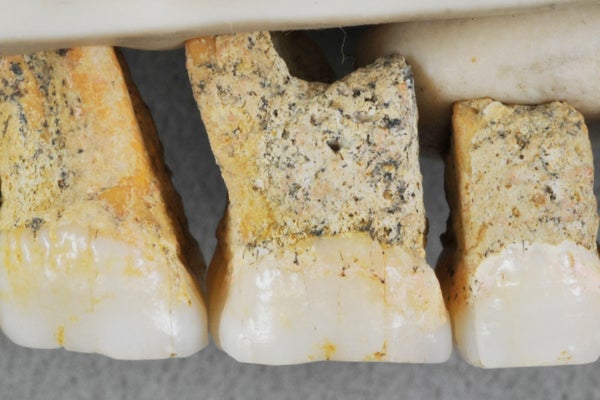The human family tree just got a little more luxuriant and a lot more interesting. Scientists say fossils discovered in a cave on the island of Luzon in the Philippines represent a previously unknown branch of humanity, a species they call Homo luzonensis. The remains reveal a tiny variety of human with a number of startlingly primitive traits that lived as recently as 50,000 to 67,000 years ago, overlapping in time with our own species, Homo sapiens, as well as other hominins (members of the human family) including the Neandertals, Denisovans and Homo floresiensis. The find raises important questions about early hominin evolution and biogeography, and highlights just how much of human prehistory remains to be discovered.
The discovery of H. luzonensis has been years in the making. The first hint of it surfaced in 2007 when archaeologists digging in Callao Cave, a popular tourist attraction on Luzon, recovered a single fossil foot bone. The bone was clearly petite, comparable in size to the foot bones of the small-bodied Negrito people who live on Luzon today. Yet its shape was “really weird,” recalls paleoanthropologist Florent Détroit of the National Museum of Natural History in Paris. Détroit suspected that the fossil specimen came from “something more interesting than a small Homo sapiens,” he says. But with only a single bone to go on, he could not make a compelling case for that interpretation. So when he and his colleagues published their description of the foot bone in 2010, they concluded only that it belonged in the genus Homo. Which species it came from remained uncertain.

Toe bone of Homo luzonensis is curved, a trait associated with climbing. Credit: Callao Cave Archaeology Project
On supporting science journalism
If you're enjoying this article, consider supporting our award-winning journalism by subscribing. By purchasing a subscription you are helping to ensure the future of impactful stories about the discoveries and ideas shaping our world today.
Over the next few years the researchers returned to the cave to look for more bones. They hit pay dirt, recovering 12 additional fossils—assorted teeth as well as hand and foot bones—for a total of 13 specimens representing at least three individuals. Detroit and his collaborators describe the new fossils in a paper published in the April 11 Nature.
One of a Kind
The fossils exhibit a mosaic of so-called primitive and derived characteristics. The primitive aspects call to mind our ancient ancestors such as Australopithecus afarensis, the species to which the famous 3.1-million-year-old Lucy skeleton belongs; the derived ones resemble H. sapiens. Looking at the teeth, for example, the premolars of H. luzonensis are large and one of them has an extra tooth root—primitive features. The molars, in contrast, are very small and strikingly modern. Together those dental traits are “a very special combination that doesn’t exist in any of the comparative samples we studied,” Détroit observes.
Still, the teeth alone would not be enough to justify naming a new species, explains María Martinón-Torres of the National Research Center on Human Evolution in Spain. The key thing, she says, is “the combination of these teeth with those hands and feet.” Intriguingly, the hands and feet of H. luzonensis are quite primitive, with curved finger and toe bones, which are typically seen in species that climb trees. Although people today can and do climb trees, humans lost most of their adaptations to arboreality after ditching life in the trees life for life on the ground millions of years ago. So a human ancestor from 67,000 years ago or later with climbing anatomy is unexpected, to say the least. Considering the teeth and hand and foot bones together, “I agree with the authors that the combination of features is like nothing we have seen before,” Martinón-Torres says.
How on earth did H. luzonensis end up with this unique mix of traits? This is the million-dollar question. Identifying the ancestor(s) of H. luzonensis is impossible at this stage. Stone tools and butchered animal bones from another site on the island hint that humans of some sort inhabited Luzon more than 700,000 years ago. But in the absence of any bones of the ancient butchers themselves, whether they might have been H. luzonensis or forerunners of H. luzonensis is unknown. The only other hominin fossils from the Philippines are 30,000-year-old bones of H. sapiens found on Palawan island,some ofwhich are small, but they lack the primitive features seen in H. luzonensis. Other human ancestors are known to have lived elsewhere in eastern Asia at around the same time as H. luzonensis, but the fossil evidence is insufficient to connect the Luzon hominins to any of these other groups. And attempts to extract DNA from the fossils—which could shed light on the origin of H. luzonensis and how it is related to other members of the human family—have failed.

Excavations in Callao Cave, a popular tourist attraction on Luzon, have yielded fossils of H. luzonensis and some butchered animal bones, but no stone tools. Credit: Callao Cave Archaeology Project
Unclear Origins
Experts are entertaining speculative ideas about the origin of H. luzonensis, each of which would revise the story of human origins in important ways if borne out by further evidence. To fully appreciate the the potential impact of these explanations, however, we have to first revisit a find from 15 years ago. In 2004 scientists working on the island of Flores in Indonesia unveiled an astonishing discovery: remains of a miniature human with a small brain and a host of other primitive traits that, like H. luzonensis, lived until relatively recently. The bones were said to represent a previously unknown member of the human family, Homo floresiensis, which was promptly nicknamed the hobbit species after J.R.R. Tolkien’s diminutive characters.
Researchers put forth two evolutionary scenarios to explain the hobbit’s striking characteristics. In the first, H. floresiensis descended from large-bodied, large-brained Homo erectus and evolved its small size as an adaptation to the limited food resources available on the island—a phenomenon known as island dwarfing. Alternatively, H. floresiensis inherited its small proportions and other out-of-time features from a more primitive ancestor—an australopithecine of some sort—that somehow managed to disperse from Africa into Asia.
Both possibilities flouted entrenched ideas about human evolution. Although other large mammals are known to follow the island dwarfing rule, humans were traditionally thought to be exempt, the idea being that the ability to invent cultural solutions to life’s challenges has buffered humans from many of the environmental forces that have shaped other animals. And australopithecine fossils have never been found outside Africa—the oldest known members of the human family found beyond the mother continent all belong to Homo. (A handful of skeptics proposed that the Flores bones instead came from a modern human with a disease that affected its growth, but no disorder proposed thus far can account for the hobbit’s suite of features.)
Similar evolutionary scenarios could explain the Luzon fossils. “Given the recent increase in the number of small-bodied, late-surviving [human species] that show many australopith-like features, I think we need to reevaluate whether all of this material should be classified as Homo,” says Tracy Kivell, a paleoanthropologist at the University of Kent in England. In addition to H. luzonensis and H. floresiensis, a small human ancestor from South Africa called Homo naledi, announced in 2015,falls into this category. (Like H. luzonensis, H. naledi also has curved fingers indicative of climbing.) “With all of the new, weird and wonderful discoveries lately, I wouldn't rule out that more primitive hominins made it out of Africa and that the small-bodied Homo species with australopith-like features have evolved from something more primitive,” Kivell remarks.
Alternatively, a large-bodied ancestor like Homo erectus might have colonized multiple islands in southeast Asia and undergone dwarfing in each locale. Differences between dwarfed species could reflect adaptations to local conditions. For instance, H. luzonensis appears to have lived in a forested environment that might have favored climbing ability.
Another potential factor bears mention. DNA studies have shown that human groups including H. sapiens, Neandertals and Denisovans interbred from time to time. In theory, similar mixing could have contributed to the mosaic of traits found in the fossils from Callao Cave, according to biological anthropologist Rebecca Ackermann of the University of Cape Town. Certain aspects of the premolars in particular may be consistent with hybridization, though she cautions that it is not possible given the available evidence from known hybrids to establish definitively that hybridization occurred in this case.
Island Explorers
In part because of the evidence for gene flow between human groups during this time period, as well as the lack of comparative material from this region, Ackermann does not support the new species designation for the Luzon fossils. “I actually feel quite strongly that all this species naming is missing the point,” she contends. The real significance of the Luzon discovery, she says, is that it illustrates the extreme diversity of human ancestors during the last few hundred thousand years—“the result of their having populated a huge range of contexts under the influence of various evolutionary forces.”
Which brings us to another burning question about H. luzonensis: how did it end up on Luzon in the first place? Luzon is surrounded by deep water. Even during times of lower sea levels, getting to the island would still have required crossing a daunting expanse of open ocean. Researchers grappled with the same problem when H. floresiensis first came to light. Like Luzon, Flores is a deep-water island. Some experts proposed that the hobbits must have had boats to make the journey. Yet the hobbit’s brain was only about the size of a chimpanzee’s and its stone tools were relatively simple—not what one might expect of a species that could make boats. Others suggested that the hobbits or their ancestors were swept out to sea during a big storm or tsunami and washed up on Flores, perhaps hitching a ride on drifting mats of vegetation—a stroke of incredibly good luck.
With only H. floresiensis to go on, the issue remained unresolved. But with the discovery of H.luzonensis there are now two primitive hominin species on record that inhabited two different deep-water islands in Southeast Asia during the late Pleistocene (the period between 126,000 and 12,000 years ago), which changes the equation. “One strange event may be luck; two suggest something more interesting,” asserts John Hawks, an anthropologist at the University of Wisconsin–Madison. What is more, he says, there is good archaeological evidence (though no fossils) of hominins on Sulawesi—another Indonesian island surrounded by deep water—well before modern humans were in the region. “These hominins were crossing water barriers. We don’t know how regular it was, but I have to think that each successful population is a survivor of many possibly unsuccessful attempts.” The big-picture lesson here is that these early ancestors “were much more adaptable than we used to give them credit for,” Hawks says. “They were smart, they learned from each other, and they transmitted traditions that helped them quickly adapt to new ecologies.”
